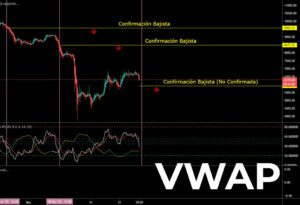
Table of Contents
ToggleThat the “crypto-market” is highly volatile is a statement that no longer surprises anyone. Based on this, any indicator that helps us to measure the general sentiment will be useful and that is the function that the “Crypto Fear and Greed Index” fulfills.
This tool, created from the example of the world of traditional finance, is an interesting thermometer to approximate the mood of this market.
Throughout this article, I will tell you all about this index, whose popularity and presence in the environment has grown along with the scars caused by “crypto-volatility”.
Crypto Fear and Greed Index: the market thermometer
As its name suggests, it is an index, which measures the general sentiment of the “crypto-market”, giving a score ranging from 0 to 100, by means of a simple and concise graphical presentation.
Let’s start at the beginning.
What is an index?
The function of an index is to take a wide variety of data, factual information, and through its analysis yield a statistical unit. There are plenty of examples in the real world. We have indices of poverty, population distribution or wealth and there are even those specific to the world of traditional finance, such as the “Dow Jones” or the “Nasdaq”, which are known worldwide.
But, we are in the crypto world, so we will focus on it. In these parts, we have, for example, the “DeFi Pulse Index”. In it, the statistical unit is its price, and its data are the quotes of each and every one of the tokens that make up the index.
In short, an index returns in a single parameter the information that comes from different variables. Let’s see how the index that summons us today, obtains its variables.
How does the Crypto Fear and Greed Index get its data?
We owe this index to Alternative.me, a platform that aims to make life easier for users by offering comparisons and analysis of 12727 programs. From our ecosystem, we thank them for the creation of this index.
According to their official website, their data to create this indicator comes from 6 different sources, which I am going to list:
-
- Volatility, makes up 25% of the total index. Volatility measures the current value of Bitcoin by comparing it against the averages of the last 30 and 90 days.
- Momentum and market volume make up another 25% of the index. The current Bitcoin trading volume is compared to the average values of the last 30 and 90 days. Consistently high buying volume is indicative of positive or greedy market sentiment.
- Social networks feed 15% of the index. Here we analyze the number of Twitter hashtags related to Bitcoin and their interaction rate. As in the previous point, the more hashtags and interactions there are, the more positive the index will be.
- Bitcoin dominance, 10% of the index. Here we analyze what portion of the total crypto market, bitcoin occupies with respect to the rest of the ecosystem. Here the results are debatable, perhaps a drop in dominance indicates a market turned to other currencies, which does not in itself indicate an overall negative or bearish environment.
- “Google Trends”, make up 10% of the index. Through Google Trends data regarding Bitcoin-related searches, it is possible to provide certain insights into market sentiment. For example, an increase in searches for “Bitcoin scams” would indicate more fear in the market.
- Survey results, 15% of the index total. Although they are not taken into account today, they can be a great indicator of market sentiment.
Well, knowing how the index composes its data, let’s see what the possible results are and how to interpret them.

Interpreting the “Crypto Fear and Greed Index”.
These types of tools, pursue a goal shared by many crypto-users, to know who will win the battle, the eternal bidding between bears and bulls. As you may already know, bears are those who aim for a bear market in which they can profit from falling prices, while bulls are those who want prices to only go up.
It is no news that the main weapon that market analysts rely on is technical analysis. However, the “Crypto Fear and Greed Index” is a valuable resource for those who need an estimate of the market’s “mood” to complement their investment parameters.
Let us now see how the results of this index can be interpreted.
How to rank the results of the “Crypto Fear and Greed Index”?
As I mentioned at the beginning, this index compiles a variety of information to produce a single result, with which it tries to present an approximation of the general mood of the cryptocurrency market. Let’s see which categories are born from each range of results.
The results of the index can be grouped into the following categories:
-
- 0-24 we find the category of “Extreme fear”, represented by the color orange.
- 25-49 between these numbers indicate that we are in a general state of “Fear”, whose yellow color helps us to recognize quickly
- 50-74 when the light green arrives, we enter, at last, the revered state of “Greed”, in which the bulls would prefer to live forever. It is the light green that identifies it
- 75-100 when the index shows these numbers, the “Extreme Greed” has already appeared in the room and the dark green is not only seen in the candlesticks of each chart, but also in the “Crypto Fear and Greed Index”.
Knowing the different categories, let’s see how to interpret them and support our daily decisions when trading this volatile market.
How to interpret the results of this index?
It is important to mention that the relationship between the result of this index and the market trend, bearish, bullish or “in range”, is not a direct relationship. This means that we may observe in this index a result of 20, which is in the category of “Extreme Fear”, but we are not necessarily in a bear market.
An interpretation of a “Fear” or “Extreme Fear” index result may indicate that we are in a time of general market “overvaluation”. This sentiment often drives large, perhaps unjustified, “panic selling”. It is for this reason that this index is simply one more tool to keep in mind.
Perhaps a good use case is one in which an experienced trader contrasts this panicked sentiment with good conditions from a technical point of view to buy while the “yellow” reigns.
In case we encounter the opposite situation, a market dominated by greed, instead of being a positive indicator, it could indicate the opposite. Now, what do I mean, can green indicate the opposite? Of course it can, it is a matter of knowing how to interpret the signals in time. Although “black swans” are not predictable, the market often gives us signals.
Phrases like “buy the rumor, sell the news” give us this guideline. An extremely positive market, driven by “FOMO” or extreme greed, perhaps indicates the existence of a bubble or conditions that lead us to overvalue certain cryptocurrencies and we are in the presence of the “beginning of the end”.
Just as it is often stated that it is an intelligent determination to “trade the trends” and not try to “play hero” by going against them, it is also an intelligent determination to interpret the market and not be won over by unjustified general sentiments.
When the index functions as a history manual
Beyond the “real time” interpretations we can make about the index and the market, reviewing history can lead us to interesting conclusions. This tool has proven its worth in alerting us to major changes in market sentiment and their effects in the short term. Large swings in market sentiment can give us an indication of an exit or entry, before prices reflect this trend.
An example, “palpable”. On April 26, 2021, the index reached a deep point, with a violent movement from 73 points, a general feeling of greed, to 27, entering fear. The index, from that point, climbed to 68, which it reached on May 12, 2021, with a generalized greedy mood.
What happened in the market? On April 26 the total valuation of the “crypto-market” was USD 1.78 trillion, before climbing to a high of USD 2.53 trillion on May 12. What happened after May 12? Perhaps it would be best not to revisit these painful memories, but, for the purposes of the article, we should mention that the fall from there took us down to USD 1.3 trillion.
In this way, we can see how the index, in this precise case, anticipated future market trend changes.

Final reflection
Crypto-users are used to dealing with multiple parameters and the risks of not following our instincts are evident in our bad decisions when we fall prey to the famous “FOMO“.
Far from being “the definitive tool”, or the only parameter to take into account when making decisions, it is, in the final analysis, one more tool to have on the table.
This index helps us to form an idea of the world around us and its current feelings. However, there is still no index or parameter, at least from my point of view, superior to a deep research that leads to firm and well-founded decisions. To stop studying is not a crypto-option.








